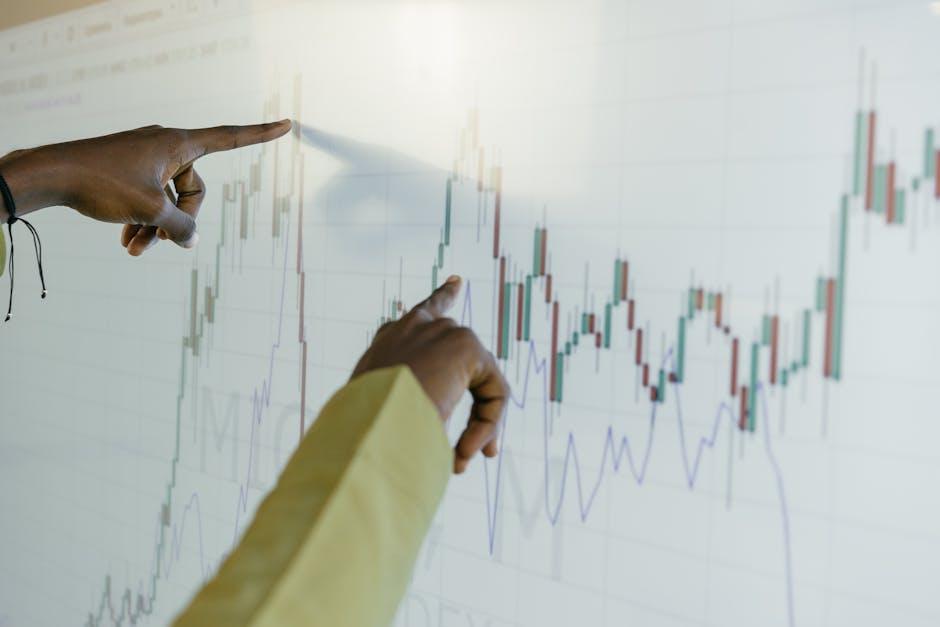In the ever-shifting landscape of volatile industries, where market fluctuations are as unpredictable as the weather, evaluating credit risk emerges as both an art and a science. These sectors, characterized by rapid innovation, economic turbulence, and regulatory upheavals, demand a keen eye and a strategic mind to navigate their financial intricacies. Understanding credit risk in such dynamic environments is not merely a skill—it’s a necessity for survival and success. This article delves into the methodologies and insights essential for assessing credit risk in industries where the only constant is change. By harnessing both traditional techniques and innovative approaches, we aim to equip financial professionals with the tools needed to make informed decisions amidst uncertainty. Join us as we explore the complexities of credit risk evaluation, offering authoritative guidance for those daring enough to venture into the volatile.
Understanding Industry Volatility and Its Impact on Credit Risk
In the ever-evolving landscape of volatile industries, understanding the nuances of industry volatility is crucial for accurately assessing credit risk. Volatility often manifests through rapid changes in market conditions, technological advancements, or regulatory shifts, each contributing to the uncertainty that can impact a company’s financial stability. Evaluating credit risk in such environments requires a multifaceted approach, focusing on both macroeconomic factors and industry-specific trends. Key considerations include:
- Market Dynamics: Analyzing supply and demand fluctuations can reveal potential vulnerabilities in a company’s revenue streams.
- Regulatory Environment: Keeping abreast of legislative changes helps in predicting compliance costs and operational disruptions.
- Technological Innovation: Assessing a company’s adaptability to technological shifts can indicate its resilience in maintaining competitive advantage.
By integrating these factors into credit risk models, financial analysts can better anticipate the challenges and opportunities that volatility presents. This proactive approach not only safeguards investments but also empowers decision-makers to navigate the complexities of high-risk sectors with confidence.

Key Metrics and Tools for Assessing Creditworthiness in Unstable Markets
In the ever-shifting landscape of volatile industries, assessing creditworthiness demands a robust set of metrics and tools. Traditional financial ratios, such as the debt-to-equity ratio and interest coverage ratio, remain essential but must be complemented with more dynamic indicators. Cash flow volatility is a critical metric, providing insights into the consistency of a company’s cash inflows and outflows. In addition, market position and competitive advantage are vital for understanding a company’s ability to withstand industry turbulence. Assessing these factors helps in painting a comprehensive picture of a company’s financial health.
To navigate these complexities, financial professionals increasingly rely on advanced tools. Credit scoring models powered by machine learning can analyze vast datasets to predict credit risk with higher accuracy. Scenario analysis tools enable stress testing under various economic conditions, offering a glimpse into potential future risks. Additionally, real-time data analytics platforms provide up-to-the-minute insights, allowing for timely decision-making. These tools, when used in conjunction with traditional methods, empower analysts to make informed credit assessments even in the most unstable markets.

Strategic Approaches to Mitigate Credit Risk in High-Risk Sectors
In high-risk sectors, where market fluctuations and economic uncertainties are commonplace, implementing strategic approaches to mitigate credit risk is crucial. One effective strategy is to diversify the credit portfolio. By spreading credit exposure across various industries and geographies, lenders can reduce the impact of a downturn in any single sector. Additionally, maintaining a dynamic risk assessment model that adapts to real-time market changes can provide a more accurate evaluation of creditworthiness, enabling lenders to make informed decisions swiftly.
Another vital approach is the use of credit derivatives. These financial instruments allow institutions to transfer credit risk to other parties, thereby reducing their exposure. Furthermore, establishing robust credit monitoring systems ensures continuous evaluation of borrowers’ financial health, allowing for early detection of potential defaults. By integrating these strategies, financial institutions can better navigate the complexities of volatile industries, safeguarding their interests while fostering sustainable growth.

Implementing Robust Credit Risk Management Frameworks for Volatile Industries
In industries characterized by high volatility, the need for a robust credit risk management framework is paramount. These frameworks should be designed to dynamically assess and mitigate risks, adapting to rapid market changes. Key components of such frameworks include:
- Comprehensive Risk Assessment: Implement advanced analytical tools and models to evaluate the financial health and operational resilience of borrowers. This includes stress testing under various economic scenarios to predict potential credit defaults.
- Dynamic Monitoring: Establish continuous monitoring systems that provide real-time insights into borrower performance and market conditions. Utilize technology-driven solutions like AI and machine learning to detect early warning signals.
- Strategic Diversification: Diversify credit portfolios across different sectors and geographies to spread risk. This strategy helps in minimizing the impact of industry-specific downturns.
By focusing on these elements, businesses can build a credit risk management framework that not only safeguards their financial interests but also enhances their ability to navigate through economic uncertainties with confidence.





